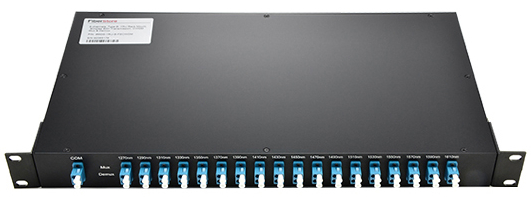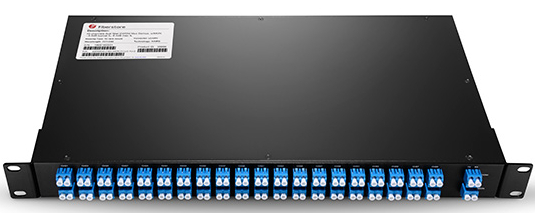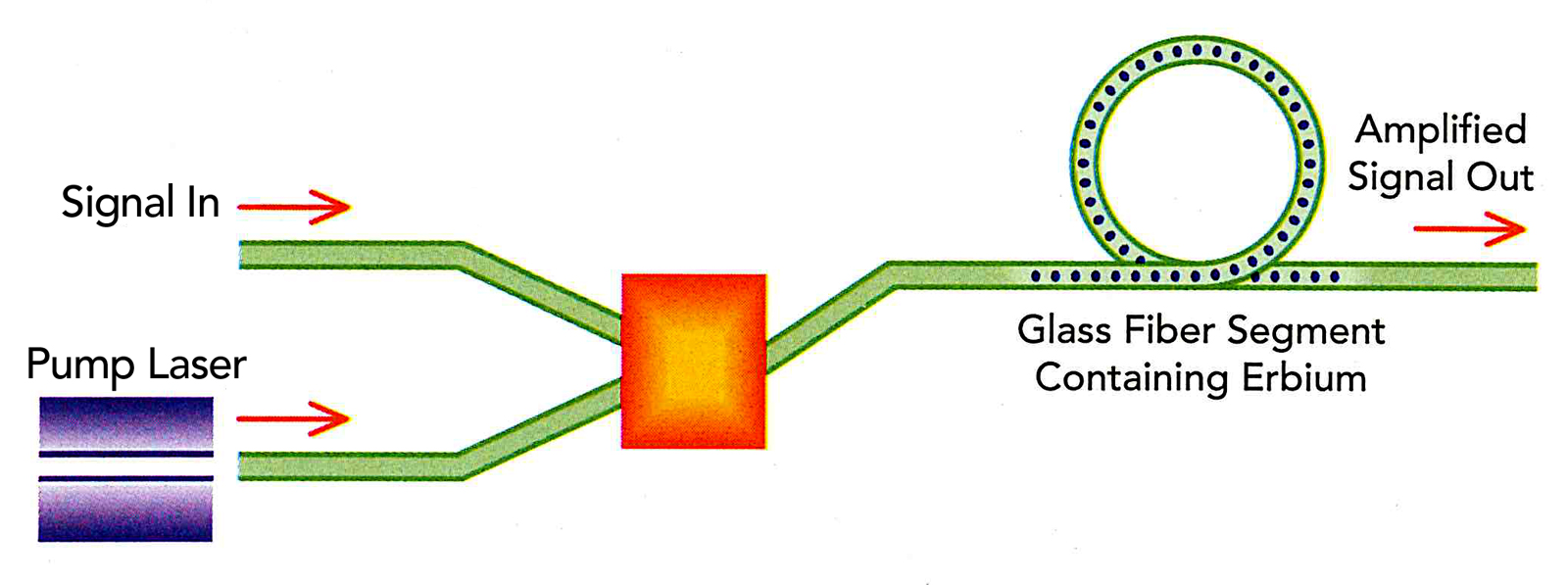To keep pace with the rapid growth of Internet traffic, service providers have been seeking to improve fiber capacity and wavelength spectrum efficiency in their networks. In response to this situation, DWDM technology is emerging. DWDW is an optical multiplexing technique for increasing the bandwidth of existing fiber networks. DWDM transceivers are important parts of DWDM network, which provide high-capacity and long-distance transmissions. Let’s take a closer look together.

What are DWDM and DWDM Transceiver?
DWDM refers to dense wavelength division multiplexing, which is a technology that gathers data signals from different sources, enables them to share a single optical fiber pair while the separation of data streams is ensured. It supports up to 80 simultaneous wavelength channels, with each of the channels only 0.8nm apart. The technology creates multiple virtual fibers thus multiplies the capacity of the physical fiber cable. It is applied to increase bandwidth over existing fiber networks and transmit data for longer distances.
DWDM transceiver is a kind of fiber optic transceiver with its own features and functions. It is designed for single-mode fiber transmission and operates at a nominal DWDM wavelength from 1528.38 to 1563.86 nm (Channel 17 to Channel 61) as specified by the ITU-T. Like other transceivers, it converts the electrical signal to optical signal and vice versa. The transceiver can support up to 10 Gbps and span a distance up to 120 km, which makes itself stand out in high-capacity and long-distance transmissions.
Types of DWDM Transceivers for DWDM Networks
DWDM transceivers are available in different types, which can support transmission rate from 155 Mbit/s to 10 Gbit/s. Here are the common types of DWDM transceivers classified based on data rate, form factor and fixed or tunable wavelength.
In the case of data rate, DWDM transceiver usually can be divided into two types: 1G DWDM transceiver and 10G DWDM transceiver. 1G DWDM transceiver includes DWDM SFP transceiver. 10G DWDM transceiver can be further divided into DWDM SFP+ transceiver, DWDM X2 transceiver, DWDM XFP transceiver and DWDM XENPAK transceiver. DWDM SFP transceiver provides a signal rate range from 100 Mbps to 2.5 Gbps, usually used as part of a DWDM optical network to provide high-capacity bandwidth. DWDM SFP+/X2/XFP/XENPAK transceivers support 10-Gigabit data rates from 9.9G to 11.25G (LAN, WAN, and OTU2/OTU2e) which are applied in different applications.
In terms of form factor, DWDM transceiver can be classified into DWDM SFP transceiver, DWDM SFP+ transceiver, DWDM X2 transceiver, DWDM XFP transceiver and DWDM XENPAK transceiver. Among those transceivers, DWDM SFP and SFP+ transceivers are the most commonly used ones, based on the SFP form factor which is an MSA standard build. DWDM X2 transceiver is based on the X2 form factor, designed for high speed data transmission for data center networking. It’s an ideal choice for data communications and telecommunications switches and routers. DWDM XFP transceiver is based on the XFP form factor which is also an MSA standard build. DWDM XENPAK transceiver is SC duplex receptacle module and is designed for backbone Ethernet transmission systems, which is the first 10GbE transceiver that supports DWDM. It can support 32 different channels for transmission distance up to 200 km with the aid of EDFAs.
Considering fixed or tunable wavelength, DWDM transceiver can be divided into fixed wavelength DWDM transceiver and DWDM tunable transceiver. Fixed wavelength DWDM transceiver, as the name implies, the wavelength is fixed. It can only transmit a certain number of wavelength, regular fixed wavelength transceiver transmits wavelength at 1310nm and 1550nm for 10G data transmission applications. The Tunable DWDM transceiver is a unique product which enables you to set the channel or “color” that the laser emits. Typically these tunable optics are for the C-Band 50GHz. Around 88 different channels can be set with intervals of 0.4nm. Tunable transceivers are typically used as “spare-optics”, in case of emergency.
Conclusion
In DWDM systems, a large number of DWDM transceivers with different wavelengths, data rates and form factors are required to satisfy network flexibility in optical network. Now that you know all the types of DWDM transceivers, you can compare them with each other and find the one you need. FS.COM provides a variety of transceivers including those mentioned above. High-quality and cost-effective products, intimate service only at FS.COM. You won’t want to miss it.
Related Articles
Everything You Need to Know Before Buying CWDM and DWDM SFP+ Transceivers
An Overview of DWDM Technology and DWDM System Components
How to Enhance the Optical Signals for a Long DWDM System?




